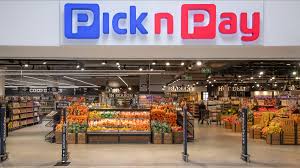Pick n Pay is making a comeback in South Africa — and this is the reason why

Pink n Pay
Pick n Pay is finally showing tangible signs of recovery, with a marked improvement in sales growth and promising momentum across key segments. This progress comes amid a strategic reset led by CEO Sean Summers, whose leadership has been widely praised — including by outgoing chair Gareth Ackerman, son of the late founder Raymond Ackerman.
At his final annual general meeting as chair, Gareth Ackerman lauded Summers for his “extraordinary leadership,” crediting him with restoring confidence and driving the group’s turnaround. “Sean brings a deep understanding of Pick n Pay and an unwavering commitment to its renewed success. His clarity, speed, and belief in what’s possible are key to getting us back on track,” Ackerman said.
Pick n Pay’s latest trading update for the 17 weeks ending June 29, 2025, reveals that like-for-like sales growth at its corporate supermarkets accelerated to 4% — the highest rate since late 2022. This is a notable step up from 3.6% in the prior six months and 3.1% in the first half of last year. This metric is particularly important because it excludes the impact of store closures, conversions, and the weaker franchise store segment, giving a clearer picture of underlying performance. Company-owned supermarkets, which constitute the bulk of Pick n Pay’s South African sales, have shown steady consecutive improvement in like-for-like sales, a direct result of Summers’s strategic reset.
To ensure long-term profitability, Pick n Pay is pressing ahead with its Store Estate Reset Plan, which involves the closure or conversion of up to 114 stores. While these closures have temporarily slowed turnover growth, they are expected to help the core grocery business break even in the medium term. Some of these stores are returning to profit, and as many as 20 might remain open after review. The strategy marks a clear break from previous approaches, including the ill-fated Ekuseni plan under former CEO Pieter Boone, which split the group into multiple trading banners and failed to reverse the decline.
The franchise supermarket division remains a challenge. While its like-for-like sales growth moderated to 0.2% in the recent 17-week period, Pick n Pay reports recent improvements and expects positive momentum to continue in the first half of FY26, narrowing the gap with company-owned stores.
Two bright spots in the group’s portfolio are Boxer and Pick n Pay Clothing. Boxer has seen like-for-like sales growth of 3.9%, with total turnover up over 12%, buoyed by an aggressive expansion strategy. Pick n Pay Clothing is performing even better, with like-for-like sales soaring 12.5% and overall sales up 17.3%, though the group cautions that this momentum may moderate as the base effect normalises.
Online sales, including Pick n Pay’s ASAP! service and groceries sold through the Mr D app, remain an important growth driver. However, growth has moderated from a remarkable 44.6% last financial year to 33% in the latest period, indicating a maturing digital channel.
Pick n Pay shares rose 2.2% recently, outperforming rival Shoprite, which saw a 0.5% decline. Shoprite, meanwhile, reported strong headline earnings growth of over 20% and supermarket sales growth of 9.5% in South Africa, highlighting the competitive landscape.




